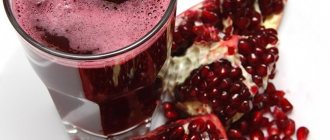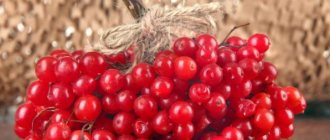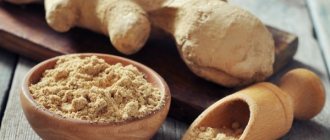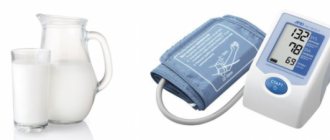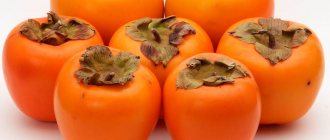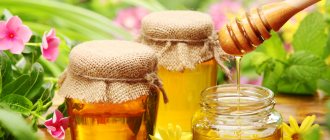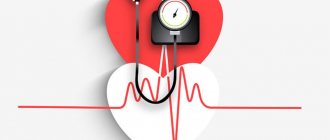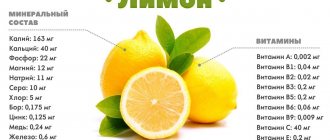Scientists from the University of Delaware conducted an experiment to find out which foods increase blood pressure. To do this, they selected more than 100 elderly people and studied their diet.
It turned out that when eating foods rich in sugars, the pressure during heart contractions increases. This effect of glucose is especially noticeable in women, according to the published study.
On the other hand, eating fruit lowers blood pressure in both women and men. If you eat them in the amount of one cup per day, you can normalize the condition, Food News reports.
Does sugar affect blood pressure?
Now we can say with confidence that not only salt, which most hypertensive patients are aware of, but also blood sugar levels affect blood pressure.
The higher the glucose concentration (hyperglycemia), the higher the corresponding blood pressure readings. In addition, an indirect relationship is also found, since increased consumption of carbohydrates contributes to the development of obesity and atherosclerosis, which also lead to hypertension. This is most common in diabetes. In turn, hypoglycemia (that is, low sugar) can cause a decrease in blood pressure. Typically, a similar situation occurs with an overdose of antidiabetic drugs or insulin, which can trigger the development of coma. Prolonged fasting can also be a cause.
Mechanism of influence
There are several mechanisms by which sugar increases blood pressure in diabetes. Firstly, the release of norepinephrine, which has vasoconstrictor properties, is provoked, which gives the fastest effect. Another short-term effect of hyperglycemia is an increase in plasma osmotic pressure. Thanks to this mechanism, water is retained in the body, which helps to increase circulating blood volume (CBV). However, this occurs only up to a certain point until the glucose level exceeds the renal threshold - 9-10 mmol/l, after which it begins to be excreted in the urine and further stimulates diuresis.
If high sugar stays in the blood for a long time, it causes disruption of all types of metabolism - not only carbohydrate, but also fat and protein. A defect in these processes negatively affects the vascular wall: it narrows, becomes less elastic, resulting in increased pressure.
With long-term diabetes mellitus, tubular nephropathy develops - a kidney disease, as a result of which sodium is retained in the blood and is not excreted in the urine. The microelement promotes an increase in blood volume, as well as swelling and narrowing of the lumen of blood vessels. All this naturally leads to increased blood pressure.
What is the main harm of sugar for the human body?
Independent statistics show that most people in our society receive almost 20 teaspoons of sugar per day, which creates an enormous burden on the liver, the organ responsible for disposing of sugar in the body. This load is such that the liver is simply unable to cope with it. Liver overload inevitably leads to the development of metabolic syndrome and insulin resistance.
In some ways, the effect of sugar on the body is very similar to the effect of alcohol. That is why today children are experiencing diseases that are usually associated with alcoholism. For example, fatty liver disease, which is only non-alcoholic in nature, as well as type 2 diabetes.
Children don't drink alcohol, but they consume sugar in huge quantities. Dr. Robert Lustig, a professor of pediatric endocrinology at the University of San Francisco, believes that sugar can rightfully be considered children's alcohol.
Insulin resistance is the cause of most serious diseases
The root cause of a huge number of deadly diseases is the development of insulin resistance. Moreover, depending on which organ is the first to demonstrate insulin resistance, one or another disease will begin.
If the liver, then type 2 diabetes will occur, if the brain - Alzheimer's disease, if the kidneys - chronic renal failure.
That is, the basis of diseases is insulin resistance. But here the question arises: what exactly causes this resistance?
According to new scientific data, overload of mitochondria (organelles responsible for producing energy in the cell) in any organ results in metabolic failures in that organ. It is important to understand what can cause such an overload?
In terms of their detrimental effect on mitochondria, trans fats are in first place, and sugars are in second place.
Fortunately, unlike trans fats, which are poisonous in any quantity and have no known safe dose, sugars are not as toxic. And for them it is possible to determine the boundaries within which their consumption is safe.
On average, a safe dose of sugar per day for an adult man is 5 teaspoons per day (about 40 grams), for a woman - 3 teaspoons, for a child - from 1.5 to 3 teaspoons, depending on age.
This means regular table sugar.
Insulin resistance as a cause of excess weight gain
What was said above regarding the fact that insulin resistance is a cause of illness is also true for excess weight. After all, insulin is largely responsible for the formation of fat deposits.
Not long ago, it was believed that insulin resistance was a consequence of fat accumulation and weight gain. It has now been established that the opposite is true: it is insulin resistance that leads to weight gain.
Insulin resistance leads to hyperinsulinemia, which is characterized by too much insulin being stored in fat cells. When adipose tissue has a lot of insulin, it consumes more energy and continues to increase in size.
Blood pressure and sweets: which foods and in what quantities are allowed?
Even despite the fact that in case of hypertension, sweets increase blood pressure, certain foods are still allowed because they bring many benefits with almost no harm. These include the following sweets:
honey;- dried fruits;
- fresh berries;
- black chocolate.
These products contain a high concentration of microelements that are beneficial for the functioning of the heart and also help normalize blood pressure.
As for chocolate, you should give preference to dark bitter varieties. It is allowed to consume cocoa. In addition to the positive effect on the heart and blood vessels, they also successfully fight stress and improve mood, which is associated with their effect on the secretion of “joy hormones” - endorphins. You are allowed to eat no more than one slab of this dessert per week.
Honey has a huge amount of useful vitamins and microelements, especially potassium. Instead of glucose, it contains fructose, so it can be consumed even by diabetics. It is recommended to eat 2 spoons per day.
Dried fruits and berries, in addition to providing the need for sugar, minerals and vitamins, also have a pronounced diuretic effect, which is important for hypertension, reducing the patient’s need for antihypertensive pills. It is very good to use them together with cinnamon, which also lowers blood pressure.
As for hypotension, almost any sweetness will increase blood pressure. But don’t be overzealous - too much sugar will negatively affect the health of hypotensive people, including. It is better to consume natural products such as honey or dried fruits.
How does sweet tea affect blood pressure?
Our usual tea has a fairly strong effect on blood pressure. It contains a significant amount of caffeine, which has a pronounced hypertensive and general tonic effect, and can cause rapid heartbeat and other arrhythmias. In addition, it contains tannin, which has a similar effect. Green tea contains even more of these components than black tea, which must be taken into account when consuming.
Most people are accustomed to drinking tea with sugar, which, of course, only increases the hypertensive effect of the drink, making it effective in hypotensive patients, especially during crises.
Why do you want sweets?
The answer to this question has two components.
Firstly, sugar acts on the brain like a real drug - morphine or heroin. This chemical compound causes the same changes in the production of opioid peptides as these hard drugs. And this is why giving up sugar is so difficult. After all, at its core, this is nothing more than drug addiction treatment.
Secondly, eliminating sugar from the diet or at least reducing its consumption is fraught with a constant feeling of hunger. This is explained by the fact that 95% of people in modern Western society use carbohydrates rather than fats as their primary source of energy, and therefore the initial stages of giving up sweets and switching to fat metabolism can be associated with certain difficulties.
Sugar is still sugar by any name.
The sad thing is that most people find it very difficult to determine how much sugar they consume. After all, there are different types of sugar, which, by the way, is indicated on product packaging. It can be:
- dextrose
- maltose
- galactose
- maltodextrin.
The names are different. But the essence is the same. It's all sugar.
The modern food industry uses sugars to produce 74% of its products. Moreover, in more than half of the cases, sugar is hidden under different names. Therefore, it is not always easy to understand where it is and where it is not.
Obviously, sugar is present in sweet baked goods or ice cream. But not all of its sources are so noticeable. Hidden sources of sugars that act on the sly are a huge danger. After all, few people think about the fact that all industrially produced pickled cucumbers and ketchups, dumplings and sausages abound in sugars.
But that's not all.
The worst thing is that sugar, and specifically fructose (the most evil of all sugars, as will be discussed below) is found in those products that are considered healthy. These are fruits (dried and fresh), honey, juices.
Most people believe that if a product has no sugar and its glycemic index is low, then it is healthy.
Nice nice theory. Only she is not faithful. Fructose does not have a high glycemic index. But this does not prevent her from dealing a crushing blow to her health.
conclusions
The relationship between sugar and blood pressure in modern medical science is quite obvious. High blood glucose levels in diabetes, as well as increased consumption of sweets by healthy people, lead to the development of hypertension, and therefore the product is contraindicated in such patients. It is better to use its safer analogues - honey or dried fruits.
On the other hand, in case of hypotension, sugar has a positive effect and, in reasonable quantities, is able to restore reduced blood pressure.
Is it possible to eat fruit?
When people learn that fruits containing large amounts of fructose are not something absolutely healthy, and, moreover, can contribute to excess weight gain, they immediately ask the question - is it really impossible to eat fruits?
Of course, it's not all bad. The benefits of fruits do exist, and they consist in the presence of a large amount of nutrients in them, for example, vitamins, as well as the presence of antioxidants and fiber.
Therefore, you should not strive to completely exclude fruits from your diet. You just have to be aware. Fruit is a dessert, just like any other sweet. So, you can’t end your meal with dessert and fruit. Either fruit or dessert. However, for those who are losing weight, both fruit and dessert are contraindicated after lunch. But people with normal weight should choose one thing.
However, if you are already overweight, you should be extremely careful when including fruit in your diet. When eating fruit, remember that you are eating fructose and that the safe daily amount is strictly limited.
Hypotension: useful tips for normalizing well-being
Hypotension is low blood pressure. Hypotension is a condition in which blood pressure drops below 100/60 mmHg. in men and below 95/60 mm Hg. among women. For older people, blood pressure is below 105/65 mmHg. is already considered reduced.
A tendency to low blood pressure is usually observed from childhood. Such children are lethargic, inactive, and quickly get tired of playing with their peers. Hypotensive adults are characterized by a so-called asthenic constitution - tall height and low weight. Most of them are thin people with pale skin.
Causes of hypotension
The most common cause of hypotension is autonomic vascular dysfunction and pathology of the endocrine glands. Separately, atherosclerotic hypotension is distinguished. This condition is observed in elderly people whose blood vessels are affected by atherosclerosis. Their walls lose elasticity and stop responding to impulses from the autonomic system. The contractile function of the heart also decreases; it pumps blood poorly. Blood pressure may decrease with anemia. This condition is associated with a decrease in hemoglobin content and the number of red blood cells in the blood, which often occurs when there is insufficient intake of iron into the body. The detection of iron deficiency anemia in old age deserves special attention. In these cases, a thorough examination is necessary to exclude a tumor of the gastrointestinal tract, small but regular bleeding from which can lead to the development of this form of anemia. In older men, hypotension often takes an orthostatic form, which is characterized by a sharp drop in blood pressure when the body is transferred from a horizontal to a vertical position. In this case, fainting and convulsions may occur, patients feel weakness in the muscles, noise and “emptiness in the head.” Worsening of health is more often observed in the mornings, in warm weather, after exercise and eating. Doctors believe that this condition is associated with age-related changes in various parts of the peripheral nervous system.
Main signs of hypotension
Manifestations of hypotension: pain and a feeling of heaviness in the back of the head in the morning, accompanied by dizziness and nausea, weakness, fatigue, decreased mood, palpitations and a feeling of interruptions in the heart, lack of air during physical activity. People with low blood pressure often experience coldness and numbness in their hands and feet, and increased sensitivity to heat and cold. Many people complain of sleep disorders.
Emergency care for acute drop in blood pressure:
- the person should be put down as quickly as possible, since in this position the blood supply to the brain is facilitated;
- the head should be positioned as low as possible, do not put a pillow on it;
- if it is not possible to lay a person down, you should sit him down with his head as low as possible between his knees;
— vapors of essential oils have a beneficial effect: just bring a bottle of rosemary and camphor oils or peppermint oil to a person’s nose.
Nutrition tips
A plant such as celery has the ability to increase blood pressure. Patients are recommended to add chopped celery roots to vegetable salads. Among fruits, strawberries have this ability; they can be eaten in large quantities. For hypotension, it is preferable to use vegetable oils in the diet: sunflower, corn, olive, peanut, soybean. From animal fats you can eat butter, cream, sour cream. Lard, beef and lamb fat are not recommended. Recommended foods include nuts, sunflower seeds, and oatmeal. If your health allows and there are no contraindications, you can drink coffee and chocolate. It is important to follow a diet. You need to eat at approximately the same time, at least 4 times a day, in small portions.

